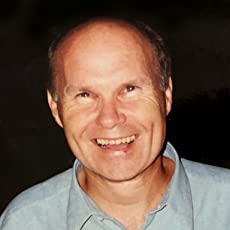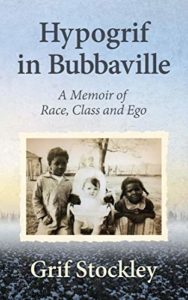HYPOGRIF IN BUBBAVILLE by Grif Stockley (Colombia)
Explaining Elaine
by Rex Nelson
Arkansas Democrat-Gazette
•
Grif Stockley was born into the cotton culture of the Mid-South. His father, Griffin Jasper Stockley Sr., owned a cotton plantation at Lake Cormorant in the Mississippi Delta when the younger Stockley was born in October 1944. The family later moved across the Mississippi River to Marianna, where the father committed suicide during the final stages of cancer. Grif Stockley was 17 when his father died.

Griffin Stockley
Stockley excelled in school, serving as president of the student body and enrolling at what’s now Rhodes College at Memphis following high school graduation in 1962.
Stockley entered the Peace Corps in 1965 after completing his bachelor’s degree in three years. He worked in Colombia for two years before being drafted into the U.S. Army.
After his two-year tour of duty, Stockley began law school at the University of Arkansas in Fayetteville. He went to work for the Center for Arkansas Legal Services in Little Rock. Stockley could have earned far more money in private practice, but he stayed in that job for 31 years, representing indigent Arkansans in civil cases.
Stockley’s first novel, Expert Testimony, was published in 1991 with lawyer Gideon Page serving as the protagonist. Stockley wrote additional lawyer mysteries in 1992, 1994, 1995 and 1997, developing a following across the country.
Stockley’s sixth novel, however, moved on from Gideon Page. Salted with Fire, published in 2001, is the story of Cormorant Ashley, who’s accused of murdering an African American history professor at the University of Arkansas at Little Rock. While still editing that novel, Stockley began researching his first nonfiction book, Blood In Their Eyes, which made Arkansans aware of the Elaine Massacre.
On Sept. 30, 1919, white law enforcement officers attempted to shut down a meeting of the Progressive Farmers and Household Union of America, which was being attended by black sharecroppers. Gunfire erupted. The next day, white men from across the Delta converged on the area, and one of the deadliest incidents of racial violence in U.S. history ensued.
Earlier this year, an updated edition of the book was released after Stockley enlisted the help of UALR historian Brian Mitchell and Encyclopedia of Arkansas editor Guy Lancaster. The updated book is one Arkansans should read.
Life is often about breaks. With the right breaks, Stockley could have become what John Grisham is now and still be turning out Gideon Page novels. Had that happened, though, we might not have Stockley’s works of nonfiction.
Those include not only Blood In Their Eyes, but also a 200 biography of civil rights activist Daisy Bates along with Race Relations in the Natural State in 2007, Ruled by Race: Black/White Relations in Arkansas from Slavery to the Present in 2008, and Black Boys Burning: The 1959 Fire at the Arkansas Negro Boys Industrial School in 2017.
“Grif Stockley has long been a mentor in my own work as a historian who focuses upon racial violence in Arkansas, and I cannot sufficiently express my honor at being asked to take part in this revised edition,” Lancaster says. “I read the first edition in graduate school, and it motivated me to begin undertaking exactly this kind of research and writing. And although Brian Mitchell is a newer acquaintance, I find myself continually inspired and amazed by his ability to uncover more and more information about Elaine and other injustices in Arkansas history.”
When the first edition of the book came out, well-known Arkansas journalist Bob Lancaster described it as “the last word on the great horror that occurred over in the Arkansas Delta 82 years ago.”
Stockley, Lancaster and Mitchell write in the 2020 edition: “Though he meant the review as a compliment, no work on the events in Phillips County in 1919 could be considered the last word, and the fact that this revised edition exists demonstrates that much remained to be uncovered when the original book was published. . . . But neither is this edition the last word on the subject of the Elaine Massacre, despite the new sources that have emerged in recent years, for we still lack a great deal of knowledge about the affair, most notably specific details as to the number and names of all the victims and the location of their graves.
“The historian’s job is, of course, to search for the truth and to reconstruct the past in as complete a manner as possible, but we must also admit the gaps in our knowledge in order to pave the way for future exploration on the subject.”
How many people were killed in the days that followed that initial incident? We don’t know.
“The fundamental narrative of this event was fractured along several lines,” the three men write. “White authorities generally claimed that local African Americans were planning an insurrection, while black sharecroppers and their allies insisted that whites had engaged in a bloody massacre. … The fact of these competing narratives doesn’t lend itself to an easily digestible story, but interrogating these sources can reveal just how contentious was the discourse from the moment the first shot was fired.”
While there’s no number available, there’s plenty of fresh information in this edition.
The authors write: “If we want to comprehend better just what happened in and around Elaine in 1919, we must go beyond the growing body of folklore and rumor to seek additional records from the time period: military records, letters from witnesses, photographs, the ledgers of plantations and much more.”
•
 Hypogrif in Bubbaville: A Memoir of Race, Class and Ego
Hypogrif in Bubbaville: A Memoir of Race, Class and Ego
by Grif Stockley (Colombia 1965–67)
Amazon Services
270 pages
July 2020
$25.99 (hardback), $12.99,(paperback), $9.98 (Kindle)
A lovely piece about Grif Stockley and his works (thus far). His name totally eluded me, even I was born about the same time (Jan. 43), the same place (Memphis, which the Wikki lists him as being born in, Lake Cormorant being close enough to Memphis to allow birth in one and delivery in the other), and, of course, Peace Corps (mine, Ethiopia 64-66). I did not return to Memphis when grad studies ended, but fled. A gross blunder, insofar as missing Grif Stockley’s works… one to be corrected shortly. Great work, and hard work, in, as they say, ‘interesting’ times. Something good can come of connecting youth today to the sins of yesteryear, before they come again as the sins of today.